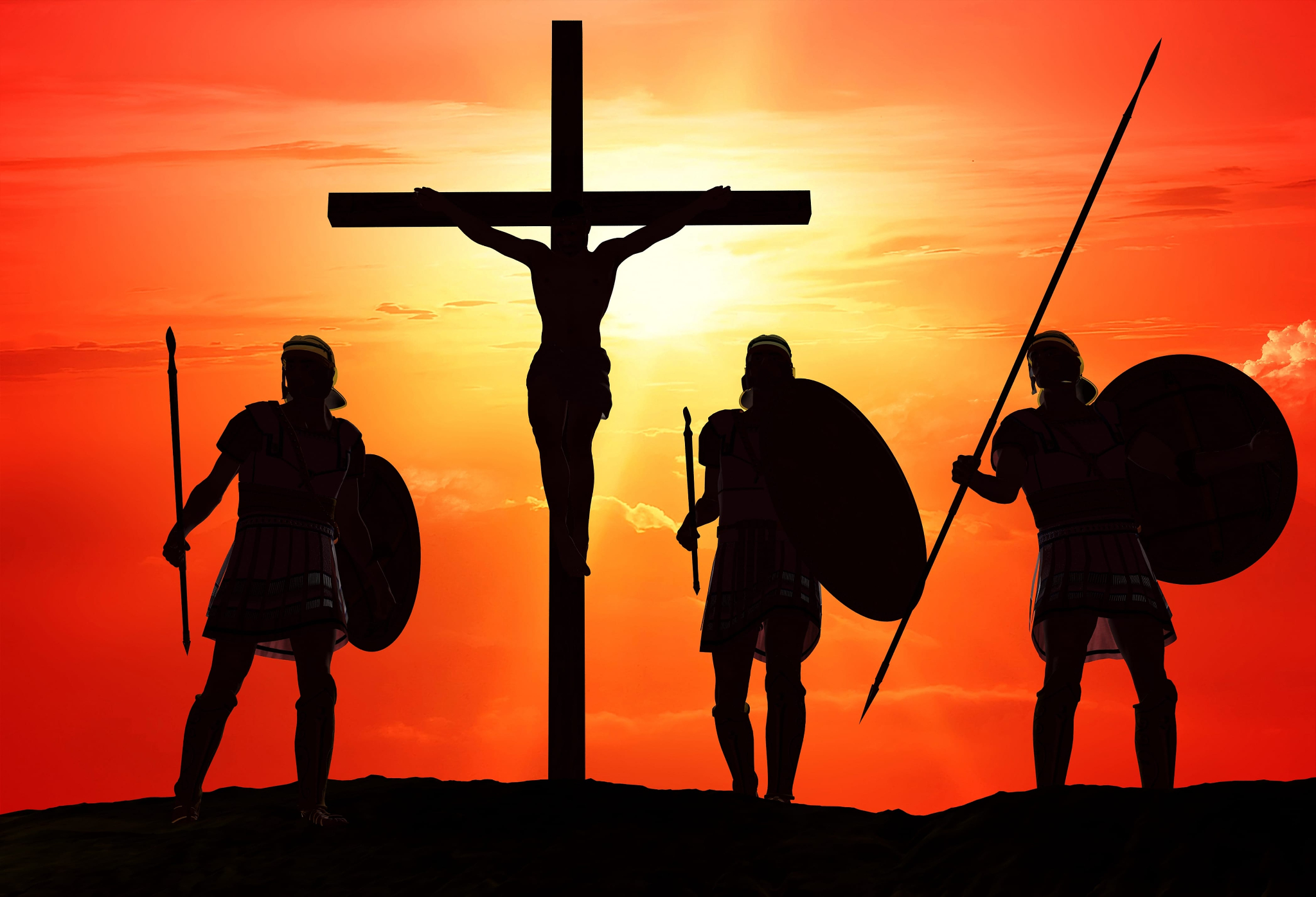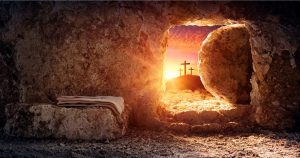
Mark 8:31 (AV)
And he began¹ to teach² them,
that the Son³ of man⁴ must suffer⁵ many⁶ things,
and⁷ be rejected⁸ of the elders,
and⁷ of the chief priests,
and⁷ scribes,
and⁷ be killed⁹,
and⁷ after three days rise again¹⁰.
¹) Make a beginning, this implies that after this time would more often instruct them.
²) To hold discourse with others in order to instruct them, deliver didactic discourses.
³) Generally used of the offspring of men; In a restricted sense, the male offspring (one born by a father and of a mother).
⁴) A human being, whether male or female; Generically, to include all human individuals.
⁵) To be affected or have been affected, to feel, have a sensible experience, to undergo.
⁶) Many, much, large
⁷) Also, even, indeed.
⁸) To disapprove, reject, repudiate.
⁹) To kill in any way whatever; To destroy, to allow to perish. Metaphorically: to extinguish, to abolish.
¹⁰) To raise up from laying down; to raise up from the dead; to cause to appear.
Other translations:
And He began to teach them that the Son of Man must of necessity suffer many things and be tested and disapproved and rejected by the elders and the chief priests and the scribes, and be put to death, and after three days rise again [from death]. [AMP] And he began to teach them that the Son of Man must suffer many things and be rejected by the elders and the chief priests and the scribes and be killed, and after three days rise again. [ESV] And he began to teach them, that the Son of man must suffer many things, and be rejected of the elders, and of the chief priests, and scribes, and be killed, and after three days rise again. [KJV] He then began to teach them that the Son of Man must suffer many things and be rejected by the elders, chief priests and teachers of the law, and that he must be killed and after three days rise again. [NIV] Then Jesus began to tell them that he, the Son of Man, would suffer many terrible things and be rejected by the leaders, the leading priests, and the teachers of religious law. He would be killed, and three days later he would rise again. [NLT] And He began to teach them that the Son of Man must suffer many things, and be rejected by the elders and chief priests and scribes, and be killed, and after three days rise again. [NKJV]
Some further information:
The Son of Man must suffer many things.
Jesus’ sufferings and death were inevitable because they were divinely ordained (Acts 2:22,23, 4:27,28), although, humanly speaking, they were caused by His rejection by the Jewish leaders.
Elders
Members of the great council or Sanhedrin (because in early times the rulers of the people, judges, etc., were selected from elderly men)
Chief priests.
(See Mark 2:6; 3:22; 8:31; 9:14; 11:18; 12:38; 15:31)
Members of the Sanhedrin and representatives of the twenty-four orders of ordinary priests (cf. Luke 1:8).
The Greek word for chief priests translates as “the leading priests.” This group includes the high priest and other priests who were experts in the Scriptures.
Ironically, these priests did not realize that by mocking Jesus (Mark 14:64,65), they fulfilled Isaiah’s prophecy regarding the Messiah: “He was despised and rejected by men, a Man of sorrows and acquainted with grief” (Isaiah 53:3).
The chief priest was above all others honoured with the title of priest, the chief of priests. It was lawful for him to perform the common duties of the priesthood; but his chief duty was, once a year on the day of atonement, to enter into the Holy of Holies (from which the other priests were excluded) and offer sacrifices for his own sins and the sins of the people, and to preside over the Sanhedrin, or Supreme Council, when convened for judicial deliberations.
According to Mosaic law, no one could aspire to the high priesthood unless he were of the tribe of Aaron and descended from a high priestly family; and he on whom the office was conferred held it till death.
But from the time of Antiochus Epiphanes, when the kings of Seleucideae and afterwards the Herodian princes and the Romans arrogated to themselves the power of appointing the high priests, the office neither remained vested in the pontifical family nor was conferred on any for life; but it became venal, and could be transferred from one to another according to the will of civic or military rulers.
Hence it came to pass, that during the one hundred and seven years intervening between Herod the Great and the destruction of the holy city, twenty–eight persons held the pontifical dignity.
The high priests, comprise in addition to one holding the high priestly office, both those who had previously discharged it and although disposed, continued to have great power in the state, as well as the members of the families from which high priest were created, provided that they had much influence in public affairs.
The title High Priest is also used of the Christ because, He, by undergoing a bloody death offered Himself as an expiatory sacrifice to God, and has entered into the heavenly sanctuary where he continually intercedes on our behalf.
Scribes.
Experts in the Old Testament law.
Originally, scribes (literally: writer) functioned as transcribers of the law and readers of the Scripture. Later they acted as lawyers and religious scholars by interpreting both civil and religious law.
In the Bible, it usually is a man learned in the Mosaic law, and in the sacred writings, an interpreter, teacher.
Scribes examined the more difficult and subtle questions of the law; added to the Mosaic law decisions of various kinds thought to elucidate its meaning and scope, and did this to the detriment of religion.
Since the advice of men skilled in the law was needed in the examination in the causes and the solution of the difficult questions, they were enrolled in the Sanhedrin; and are mentioned in connection with the priests and elders of the people.
After three days.
After three days He would rise from the grave, in accordance to the sign of Jonah (Matthew 12:40).
There are different opinions on this
▪︎ One interpretation indicates that the Sabbath for which Jesus died was the normal weekly Sabbath and the days were numbered differently, which would mean that Jesus was crucified on Friday and rose again on Sunday morning.
We could understand the time indication ‘after three days’ in the sense of ‘on the third day’ (cf. Genesis 42:17-18; 2 Chronicles 10:5,12; Matthew 16:21, 17:23, 20:19; Luke 9:22; 18:33), and parts of a day would also be counted as a full day.
▪︎ The other interpretation indicates that the Sabbath for which Jesus died was a special Sabbath (Pesach – Passover, Matthew 26:18) that fell on a Thursday that year.
In this case, Jesus would have been crucified on Wednesday and be risen on Saturday evening, with His resurrection not discovered until Sunday morning. And so He would have been in the grave for three full days and nights.
Rise again.
Jesus always mentioned His Resurrection in connection with His death (cf. Mark 9:31; 10:34; Matthew 16:21, 17:23, 20:19; Luke 9:22, 18:33), making it all the more incomprehensible that the disciples were so slow to understand.
× 0 ×
In the section that begins now (Mark 8:31-33), we see how the Lord Jesus resumed teaching His disciples, now about the sufferings that were waiting Him; “and began to teach them” (Mark 8:31). Peter’s confession gave Him every reason to do so.
And so Jesus began to point out to them that He must suffer (compare Matthew 16:21-23; Luke 9:22; two more would follow this announcement)
It is noticeable that in this context He did not refer to Himself as the Christ, but as the Son of man (we already encountered this term in Mark 2:10,28 and we will find this more often further on). He took this title from Daniel 7:13.
▪︎ In that capacity He would one day appear as Judge in glory (Mark 8:38, 13:26, 14:62).
▪︎ But in that same capacity He would soon have to suffer a lot (Mark 9:12, 10:33,45, 14:21,41; Luke 24:7).
When Jesus told this, he must have remembered the picture of the suffering Servant of the Lord from Isaiah 53.
That many sufferings that He would have to endure, Jesus now told His disciples, was not a thing that would strike Him. It had everything to do with a divine must (see Mark 8:33, compare Mark 13:7,10).
God put all that suffering on Him. But people would also have a hand in that. By the official leaders (Jesus here mentions the three sections of the Sanhedrin, the highest authority of the Jews) He would be rejected, and that would be final.
It is obvious to see therein an allusion to Psalm 118:22 (“the stone rejected by the builders,” cf. Mark 12:10). That rejection would result in them putting Him to death. But that violent death would not be the last. After three days He would rise from the grave.
All things considered, this first announcement of suffering already contains the most essential elements of early Christian proclamation (cf. Luke 24:7,26,46; Acts 10:39; 1 Corinthians 15:3-4).
Now let us reflect on this
There is a wonderful contrast in these words.
Actually, they don’t fit together: Son of man and suffering.
Daniel speaks of Him as the One who comes in glory.
The Christ is going to fill this in further.
Before He is glorified comes His humiliation.
That’s the law of the wheat grain: to die to bring forth fruit.
Anyone who learns to follow Him in that way through faith will already see His glory appear in suffering. He wants to be with the people as the Suffering Servant of the Lord.
Are you also following Him?
Then His suffering is a source of life for you too.
We say, He descended so deep, to pull me out of the realm of the lost.
That teaches us to sing about His grace, whereby children of men can become God’s children.
Twitter: @SchoemakerHarry
Website 1: https://devotionals.harryschoemaker.nl
Website 2: http://bijbelplaatjes.nl




